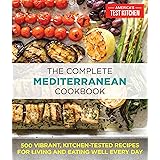There’s an undeniable charm to a perfectly made glass of lemonade. It evokes memories of warm summer days, backyard barbecues, and simple, refreshing pleasures. While many modern interpretations exist, the classic version often holds a special place in our hearts. The video above beautifully captures the essence of this traditional approach, guiding you through the straightforward steps to create that ideal balance of sweet and tart.
Making a truly exceptional batch of homemade lemonade isn’t complicated, but it does benefit from understanding a few key principles. This article will expand on the techniques shown in the video, delving into why certain steps are important and how you can elevate your lemonade recipe from good to truly great. We’ll explore the science behind a good simple syrup, the art of extracting the best lemon juice, and how to achieve that coveted balanced flavor profile that makes for the perfect refreshing drink.
1. The Sweet Heart of Your Lemonade: Crafting the Perfect Simple Syrup
The video briefly mentions combining sugar and water and heating it until the sugar dissolves. This crucial step is more than just mixing; it’s about creating a “simple syrup.” Simple syrup is fundamental to many beverages because it ensures the sugar is fully dissolved and evenly distributed throughout the drink, preventing grainy textures or sugar settling at the bottom of your pitcher. Imagine trying to dissolve granulated sugar directly into cold lemon juice and water—it would be a struggle, leading to an inconsistent taste.
To make simple syrup for your homemade lemonade, combine equal parts sugar and water in a small saucepan. For the amount needed for a classic lemonade recipe, starting with one cup of sugar and one cup of water is a good baseline. Heat this mixture over medium heat, stirring constantly, until all the sugar crystals have completely disappeared. Do not bring it to a rolling boil; just enough heat to facilitate dissolution is sufficient. Once clear, remove it from the heat.
An essential step often overlooked is allowing the simple syrup to cool completely before mixing it with your lemon juice and water. Pouring hot syrup directly into cold liquids can affect the overall temperature and potentially even the flavor profile of your finished beverage. Let it cool to room temperature, or even chill it in the refrigerator for an hour or two. This patience ensures a truly refreshing and perfectly blended classic lemonade.
2. Juicing for Gold: Maximizing Your Fresh Lemon Yield
The video specifies needing “a cup of freshly squeezed lemon juice,” a precise measurement that underscores the importance of the lemon itself. The quality and quantity of your lemon juice are paramount to your homemade lemonade’s success. Not all lemons are created equal, and how you prepare them for juicing can make a significant difference in the final output.
When selecting lemons, opt for those that feel heavy for their size and have thin, smooth skin. These often indicate a higher juice content. Before cutting, roll the lemons firmly on a countertop for about 10-15 seconds. This action breaks down the internal membranes, releasing more juice when squeezed. Imagine if you skipped this step; you might leave a substantial amount of precious juice trapped inside.
For efficient juicing, a hand reamer, a citrus press, or an electric juicer all work well. A trick for getting every last drop is to microwave a whole lemon for 10-20 seconds before rolling and juicing it. The gentle heat can help relax the fruit’s fibers, making it easier to extract the liquid. Remember, that one cup of juice mentioned in the recipe is the target for a balanced lemonade recipe, so measure carefully.
3. The Art of Balance: Combining for the Perfect Taste
Once you have your cooled simple syrup and your fresh lemon juice, the next step, as shown in the video, is to stir everything together. This is where the magic of the classic lemonade comes alive, achieving that ideal sweet with just the right amount of tartness. The ratio of ingredients is key, and while the video provides a fantastic starting point, personal preference plays a significant role.
A good general guideline for a balanced flavor in a homemade lemonade is often one part simple syrup, one part fresh lemon juice, and two to three parts water. For example, if you have one cup of simple syrup and one cup of lemon juice, you would typically add two to three cups of cold water. Start with less water and add more to taste, ensuring you achieve your desired sweetness and tartness. This allows you to fine-tune the flavor.
Thorough stirring is essential to ensure all components are fully integrated. Use a large spoon or whisk, and stir for at least a minute. You want the lemon juice, syrup, and water to become one harmonious blend. Consider using very cold water or even pre-chilling your serving pitcher. This helps keep your lemonade cold and refreshing without diluting it too quickly with ice.
4. Elevating Your Homemade Lemonade Experience
While the basic lemonade recipe is perfect as is, there are numerous ways to enhance your homemade beverage, turning it into a truly memorable drink for any occasion. These simple additions can introduce new dimensions of flavor and visual appeal, making your classic lemonade feel even more special.
Fresh Garnishes and Infusions
- Citrus Slices: Float thin slices of fresh lemon, lime, or even orange in your pitcher. Not only do they look beautiful, but they can also add a subtle aromatic note.
- Herbs: Mint, basil, or even rosemary can infuse a delightful, sophisticated twist. Gently muddle a few sprigs in the bottom of your pitcher before adding the liquid, or use them as a garnish.
- Berries: Muddled raspberries, sliced strawberries, or whole blueberries can add color, sweetness, and a fruity complexity.
Sparkling Variations
For a fizzy, lighter version, replace some or all of the still water with sparkling water, club soda, or even a lemon-lime soda for extra sweetness and zest. This is perfect for a festive occasion or when you crave a little effervescence in your homemade lemonade.
Adult-Friendly Enhancements
For those over 21, a splash of vodka, gin, or even a fruit-flavored liqueur can transform your lemonade recipe into a delightful cocktail. This makes for an excellent base for summer entertaining. Always enjoy responsibly.
5. Troubleshooting Common Lemonade Quandaries
Even with a straightforward lemonade recipe, sometimes things don’t go exactly as planned. Here are solutions to common issues that might arise when making your homemade lemonade, ensuring every batch is a success.
Too Tart?
If your lemonade is overly tart, it simply means you need more sweetness. Resist the urge to just dump in more granulated sugar. Instead, quickly make a small batch of additional simple syrup (e.g., 1/4 cup sugar to 1/4 cup water) and add it incrementally to your lemonade until the desired balance is achieved. This ensures smooth integration of the extra sugar.
Too Sweet?
Conversely, if your homemade lemonade is too sweet, you need more tartness or dilution. Add a little more freshly squeezed lemon juice, a tablespoon at a time, until the sweetness is cut. Alternatively, adding a small amount of cold water can help dilute the sweetness, though this might also dilute the lemon flavor slightly. It’s a delicate balance to strike.
Cloudy Lemonade?
Cloudiness in homemade lemonade is usually harmless and often indicates that you’ve extracted too much of the pith (the white part of the lemon peel) during juicing. Pith contains compounds that can make the lemonade cloudy and sometimes bitter. To avoid this, be careful not to over-squeeze your lemons, especially with a reamer, and try to avoid letting any pith fall into your juice. Straining your lemon juice through a fine-mesh sieve before mixing can also help remove any pulp or small pith pieces, resulting in a clearer classic lemonade.
Ultimately, the timeless appeal of a truly great glass of homemade lemonade lies in its simplicity and refreshing nature. By understanding the nuances behind each step, from creating simple syrup to perfecting your juicing technique, you can consistently achieve that beloved sweet and tart balance showcased in the video. Enjoy crafting your perfect batch!











